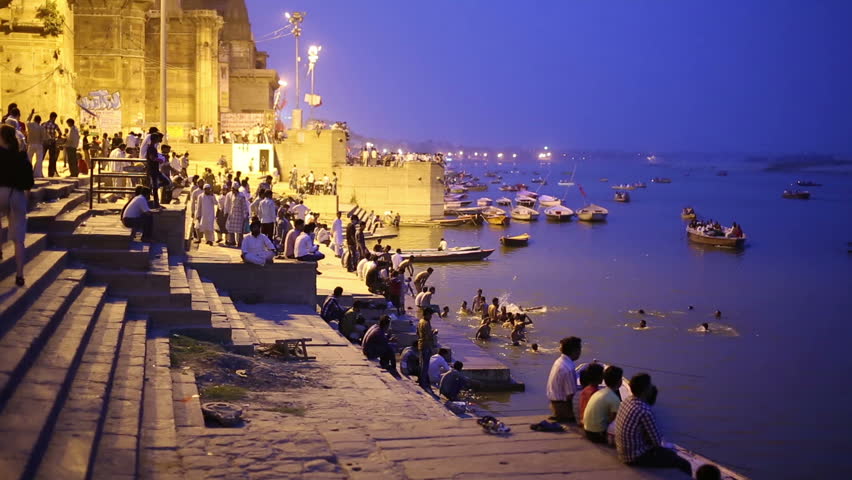Table of Contents
- The City of Three Names: Unveiling Varanasi, Banaras, and Kashi
- Why Varanasi is Called Banaras and Kashi
- 1. Kashi: The City of Light
- Ancient Origins
- Spiritual Significance
- 2. Varanasi: The City Between Rivers
- Geographical Roots
- Historical Development
- 3. Banaras: The City of Worldly Fame
- Evolution of a Name
- Cultural Significance
- Historical Usage
- Conclusion
- FAQs – Why Varanasi is Called Banaras & Kashi
The City of Three Names: Unveiling Varanasi, Banaras, and Kashi
Wrapped around the curves of the divine Ganges there is a city that has been charming generations for centuries. Called by three different names, Varanasi, Banaras, and Kashi the city is one of the oldest in the country located in the northern Indian state of Uttar Pradesh. However, do we really need three names for one city? Let’s look in detail at the inspiring story behind these names and investigate the backgrounds of history, myths, and cultural development that lay behind them.
Why Varanasi is Called Banaras and Kashi
In modern times, all three names – Varanasi, Banaras, and Kashi – are used interchangeably, each highlighting a different facet of the city’s identity:
- Varanasi: Official name, emphasizing its geographical and historical context
- Banaras: Evokes its cultural richness and worldly fame
- Kashi: Underscores its ancient spiritual significance
1. Kashi: The City of Light
Ancient Origins
The oldest and most revered name for the city is Kashi. This name has its roots in Hindu mythology and ancient Sanskrit.
- Derived from the Sanskrit word “Kas,” meaning “to shine”
- Believed to be the site where Lord Shiva first stood when creating the universe
- Considered the cosmic center of the Hindu universe
Spiritual Significance
Kashi holds immense spiritual importance for Hindus:
- Seen as a place where the material and spiritual worlds intersect
- Believed to grant moksha (liberation from the cycle of rebirth) to those who die here
- Home to numerous ancient temples and sacred sites
2. Varanasi: The City Between Rivers
Geographical Roots
The name Varanasi has strong connections to the city’s geographical location:
- River Theory:
- Possibly derived from the names of two rivers:
- Varuna, which joins the Ganges at the city’s northern border
- Assi, a small stream at its southern edge
- The city between these rivers became known as Varanasi
- Possibly derived from the names of two rivers:
- Royal Legacy Theory:
- May be named after King Varana, a legendary ancient ruler
- The king allegedly rebuilt the city and named it after himself
- Over time, “Varana” may have evolved into “Varanasi”
Historical Development
- Varanasi became the more official name for the city
- Used in historical documents and administrative records
- Reflects the city’s growth and expansion beyond its original boundaries
3. Banaras: The City of Worldly Fame
Evolution of a Name
Banaras (also spelled Benares) is thought to be a corruption of “Varanasi”:
- Likely evolved through different dialects and languages
- Became popular as the city’s fame spread through trade and pilgrimage routes
Cultural Significance
The name Banaras evokes:
- Fine silks and intricate brocades (Banarasi sarees)
- The famous Banarasi paan (betel leaf preparation)
- A rich tradition of classical music and dance
Historical Usage
- Gained prominence during the Mughal era
- Widely used during the British colonial period
- Often used in literature and popular culture
Conclusion
Thus, the three names of this amazing city – Varanasi, Banaras, and Kashi – are not just the variations of the name in different languages. They are windows to the complexity that is the oldest continually inhabited city in the world of Amman Jordan. Every name has a history, where faith, tradition, and the social advancement of cultures are rooted and expressed.
Gentle dawn breaking over the Ganges, permits the ghats be bathed in golden light, it is as if the hum of many centuries of footsteps can still be heard – here. This is a tale that lives on in the resonances of the priests’ chants, the glimmering flow of the river waters, and the humdrum of occupations in a city of three names, a silent reminder of India’s mysticism and cultural significance.
No matter whether a person referred to this place as Varanasi, Banaras, or Kashi, it has always been a city of union where the temporal and the eternal as well as mortal and the godly enjoy their eternal ballet.
FAQs – Why Varanasi is Called Banaras & Kashi
Why Varanasi is Called Banaras
It is said that Varanasi is termed Banaras due to this gradual process of evolutionary development in language. This is most probably a distortion of the ‘Varanasi’ which got into the vernacular in the Mughal-British colonial period. As the fabric and the delicacies were traded and transported they carried along the name Banaras for anyone to know where it originated from. This indicates Varanasi’s secular aspect and is the commercial hub and a major center of art in the northern region of India.
Why Varanasi is Called Kashi
Filled with spirituality and as a place with religious importance in the Hindu religion, Varanasi is also known as Kashi. Kashi refers to the name of the place, derived from the Sanskrit ‘Kas’ meaning ‘to shine’ related to the place’s heritage as a center of spiritual learning. Historical data as well as Kashi Puran narrates that Kashi is the place where Lord Shiva initially placed his foot while creating the universe. Kashi’s name is considered as the oldest one to name the city and thus it reflects the religious side of the city as it has been a major pilgrimage destination since ancient times.
